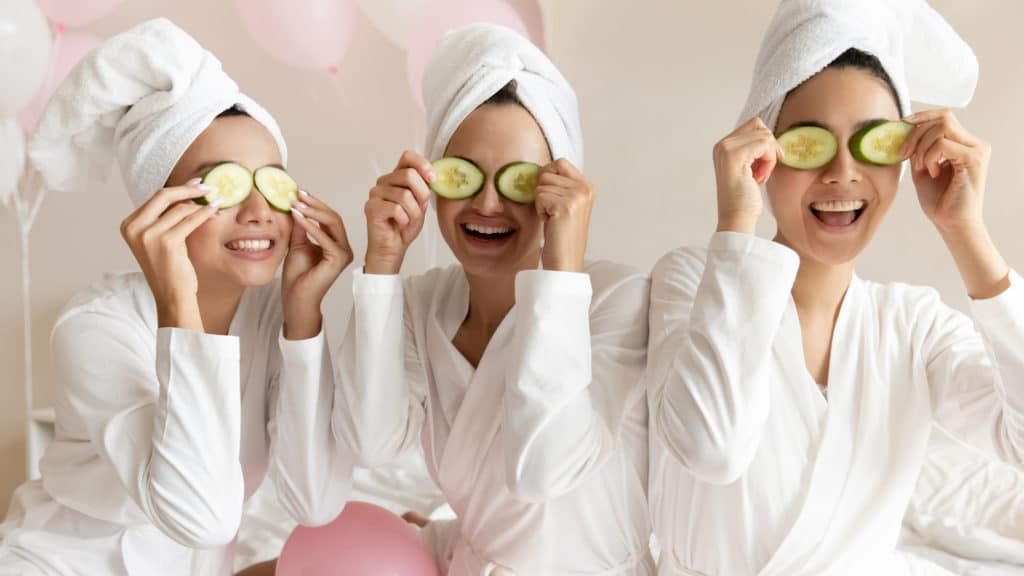Do you ever think about how to increase business growth for your brand in the beauty, health, or wellness space? Or perhaps you’ve been considering selling your brand, but need to take it to the next level first, to maximize your potential payout?
Releasing new products can be an excellent business investment, but when the health, beauty and wellness industries are constantly evolving with the latest trends, this can be risky. Nobody wants to pour all their hope and finances into investing in a mattifying skincare product, only to discover the next week that dewy, natural skin is back in!
With decades of experience collectively in these industries, our team at BRANDED are experts at knowing exactly how to grow your business for sale, without the risk.
Keep reading for our guide into which brands, techniques and trends are definitely here to stay.
Think about Sustainability
A desire to protect the planet is one trend which shows no signs of departing.
In fact, according to one industry report, a massive 76% of active beauty consumers are focusing on buying products that are sustainably made.
Meanwhile, a Harper’s BAZAAR poll revealed that nearly 50 percent of 1,000 women across all ages, races, and ethnicity are now embracing ‘clean’ beauty products, which favor natural ingredients and that are non-toxic. In fact, more than 60 percent of women would be willing to splurge on these premium items.
This is particularly the case for the younger generations. We know that beauty consumers from Generation Z are keen on products they feel fit their values. And research has also suggested that younger people have a tendency towards anti-waste principles, like unpackaged, reusable, and refillable products.
Reflecting this preference, top fashion publications such as Vogue are frequently seen reporting on the beauty brands that have a sustainability ethos, as well as suggesting where consumers ought to spend their money, if they want to save the planet (and their skin!).
And it’s not just the beauty industry where this is the case, wellness and health brands need to take note as well. Perhaps surprisingly, McKinsey has reported that when it comes to dietary supplements, globally 40% of consumers said that if they had to choose between natural supplements or more effective ones, they would choose the more natural option.
Despite all this, it appears that for beauty businesses at least, brands aren’t always listening to the clamor from customers for more environmentally friendly choices.
Credo has estimated that 122 billion beauty packages are created each year and of those, less than 10 percent are recycled. Meanwhile around 7.2 billion pounds of single-use plastic end up in the ocean every year.
What You Can Do
So how can you stand out from the crowd and give your customers what they want, while also considering how to increase business growth?
One of the big new things in the beauty and sustainability world you might want to investigate is waterless beauty. Brands using this technique avoid diluting their products with water to save money. Instead, they prioritize saving their carbon footprint and company reputation.
If that isn’t a good fit, then you could consider producing products that are zero waste, plastic free, made with organic or natural ingredients, or in recyclable packaging.
Whatever you do, it’s essential you ensure it’s more than just a cursory nod to sustainability. More and more companies are now being called out for greenwashing, where they market themselves as environmentally friendly without the credentials to back it up. For example, beauty brand Bondi Sands promoted their sunscreens as ‘reef friendly’, only to later be hit with a lawsuit when it was discovered they included various harmful ingredients.
So, if you want to set yourself up well to sell your ecommerce business, it’s important to not just talk about being sustainable, but also to ensure that your brand is also living your values.
Don’t Neglect Social Selling
According to research from Bazaarvoice, the vast majority of global consumers (an astonishing 91 percent!) now prefer to shop for beauty products via social platforms, and only 44 percent opt to browse for and purchase cosmetics in-store. Although it is worth mentioning that ‘shopping’ here also includes browsing and not just purchase decisions.
When you’re growing a business, it’s essential you don’t overlook social media and social selling, especially for beauty, wellness and health brands, and even more so if you are thinking of eventually selling.
As with sustainability, this is particularly the case for a younger audience. One study found that 42% of 18 to 24-year-olds are inspired by social media when it comes to makeup, for example.
Being active on social media is also one way to follow current trends, without re-hauling your entire product line every time something new comes in fashion.
For example, in the beauty world, eyes are currently having a moment, with TikTokers focused on a series of eye-related makeup trends such as Siren eyes (that evoke a seductive energy), sleepy eyes (meant to be alluring and effortlessly attractive), and doe eyes (a subdued, innocent look). On the nail, body and hair front, ‘slugging’ is the new kid on the block, with sealing in moisture via Vaseline-style products becoming all the rage.
And it’s not just beauty where social selling is essential. One of our brands, Fullstar, who sells vegetable choppers online, found that social media was worth the business investment. With our guidance, they’ve been booming on social media, releasing videos seen by at least 50 million people.
What You Can Do
Jumping on these beauty trends on social via tutorials, influencer activity, and memes can help show your relevance to your target audience, as well as providing an excellent opportunity to push your existing products. You don’t need to release a new ‘slugging’ or ‘siren eyes’ specific product – be creative and work with your existing range to hook onto the latest trends of the day.
Equally, staying abreast of which influencers appear to be hot on trends and key for your audience can be helpful for knowing who to approach as part of an influencer marketing strategy.
However, when doing this, make sure you look for someone who aligns with your brand values. For example, if you are looking to go down a sustainability route, as per the previous point, choose someone for whom this is a key issue who can speak on it convincingly.
So, if you are gearing up to sell your brand and social is something you don’t feel confident in, get in touch with BRANDED for help. We love a challenge and excel in propelling our brands on social media.
It’s All about Personalization
Finally, if you’re a health, wellness and beauty brand then looking at personalizing more of your product offerings may be something to consider, as it’s another trend that appears to be here to stay
Previously, the go-to for many beauty brands was a counter at a department store, where customers could be ‘color matched’ to their foundation or try on the latest eyeshadow or lipstick in person.
Now that shopping is increasingly heading online, it makes sense that customers are looking for something to replace these in-person customization options.
Makeup brands like Mac are now building apps and AI into their web design, allowing customers to try on makeup virtually or to discover their foundation match online.
Wellness and health brands are seeing the impact of personalization too. There has been a rise in the number of supplement companies providing tailored vitamins specific to the ailments faced by customers. For example, HUM Nutrition offers one such service, with a virtual 2-minute quiz allowing users to create a nutrition profile, receive a recommendation personalized to their needs and order customized vitamins to their home.
Similarly, health brands like 23andMe allow customers to use DNA testing to highlight genetic health risks, like Celiac Disease or Parkinson’s. After sending off saliva samples, users will receive personalized results which allow them to know which potential genetic conditions they could be at risk of. Wearable tech fits into this category too, with fitness watches and other health monitoring accessories still proving very popular.
What You Can Do
Depending if you own a beauty or health & wellness brand there are multiple tactics you can employ to include an element of personalization.
For example, when it comes to skincare, this might mean internet quizzes where users can work out their complexion type, whether dry, sensitive, combination, or otherwise.
Quizzes can be very useful for beauty & wellness brands as they introduce a conversation between your brand and the consumer which instantly creates that feeling of a personalized approach. Moreover, it lets you get to know your customer base and adjust your offering accordingly.
To create that personal experience for the consumer you can also think of investing into your customer care experience, perhaps enabling video calls and focusing on personalized follow up shopping recommendations.
If you want to opt for a more tech-forward approach for your personalization there are plenty of mobile apps that you can use, check some of them out here.
How We Can Help
BRANDED acquires brands in order to help businesses skyrocket their growth. We will review your current offering and together, look at how to take your brand to the next level. Whether that means boosting your social offering, launching new products, or doing whatever it takes to transform your business into a global brand that people love.
Contact us to connect with our team and learn more.





